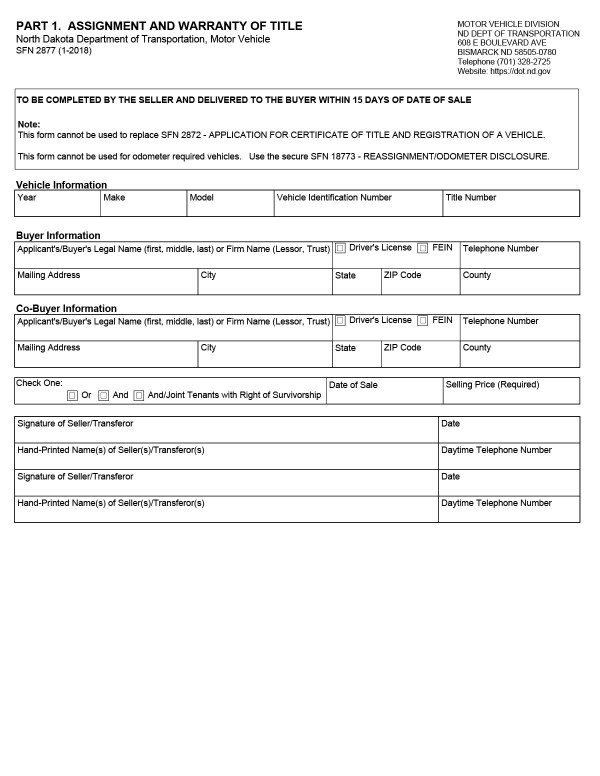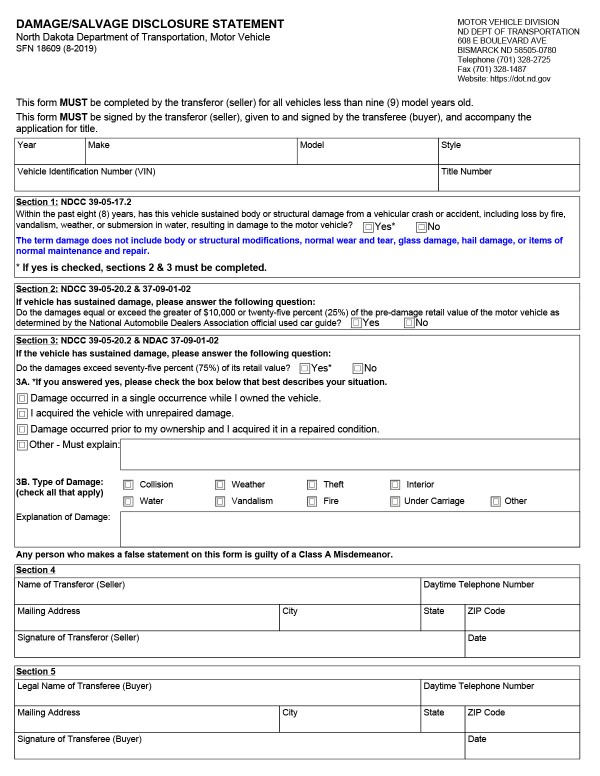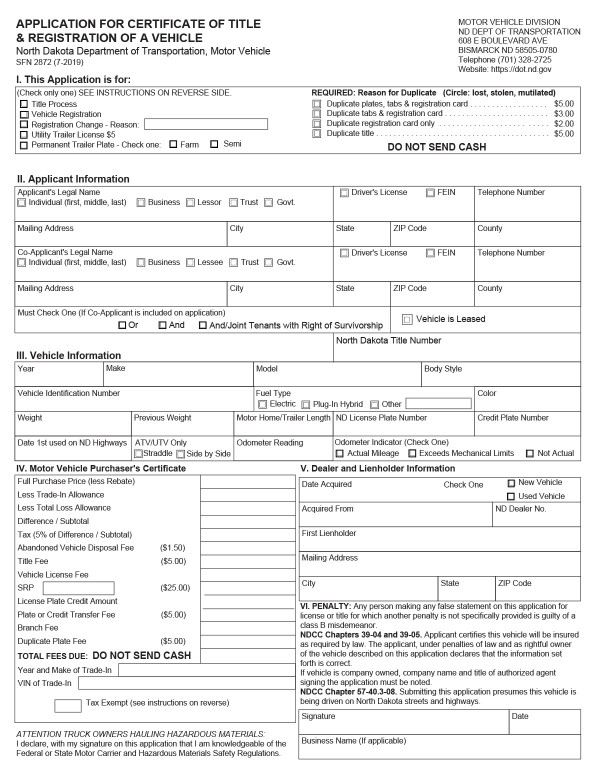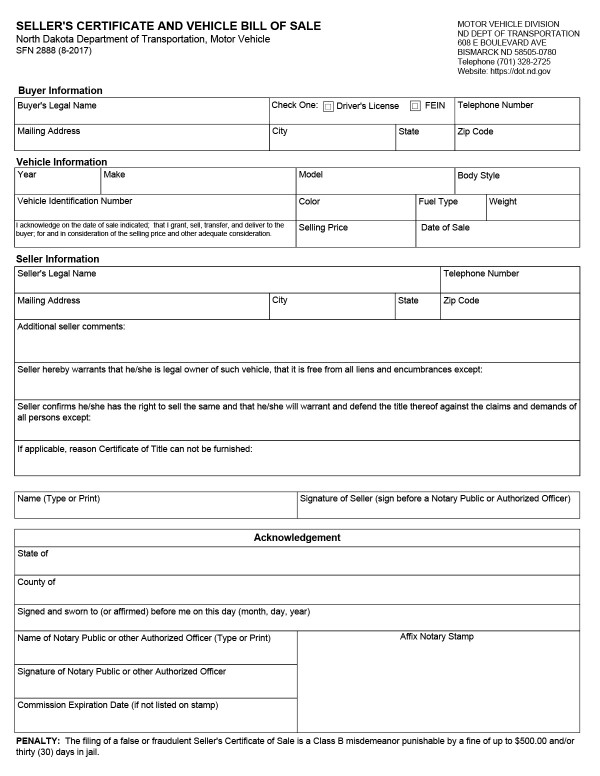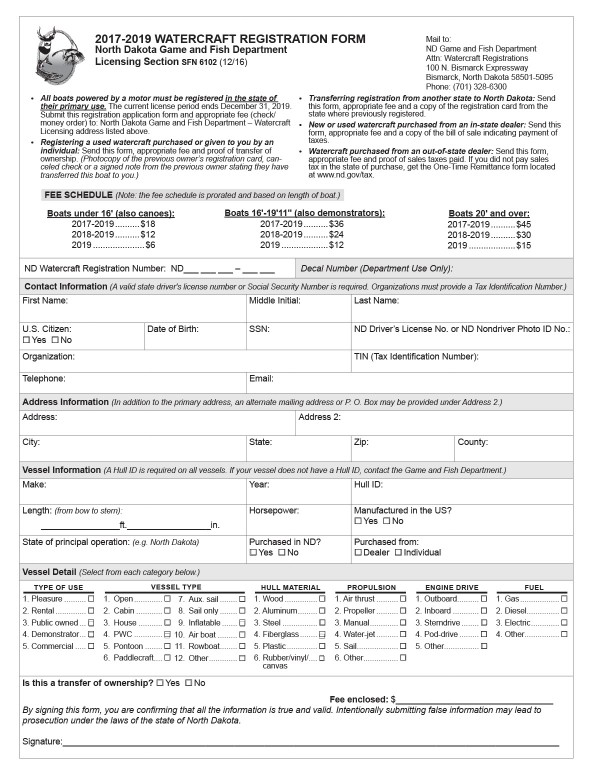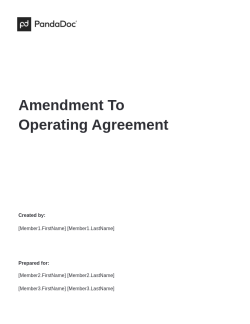Important Terms for a Bill of Sale
- Seller: This section lists the name, address, and contact information for the seller. Any additional sellers may also list their information here.
- Buyer: This section provides the name, address, and contact information for the buyer(s).
- Property: This section describes the item to be sold, including any identification numbers or important information about its condition.
- As-is: This indicates that the buyer agrees to purchase the item in its current state. By signing a bill of sale marked “as-is,” a buyer verifies that they have had the chance to inspect the item.
- Property Location: This indicates the location of the item before the sale. There are some situations, such as vehicle purchases and sales, in which the item’s state of origin matters.
- Comments: This section allows the buyer and/or seller to comment on the property, its condition, and any liens or restrictions.
- Acknowledgment: This section provides the name, signature, and stamp for an authorized notary public.
1. North Dakota Bill of Sale Requirements
North Dakota requires proof of ownership, such as a bill of sale, to operate a vehicle that you recently bought and have not yet registered. Bills of sale are also required to register dealership-purchased boats.
In other private sale situations, a bill of sale is not required, but it is good standard practice to include one if the transaction involves a high-value item.
Why Use a Bill of Sale?
A bill of sale provides the buyer with proof of ownership, which North Dakota requires if you have not yet obtained registration for a newly purchased vehicle. Proof of ownership can also protect the buyer and seller if a legal dispute arises after a sale.
Additional Considerations
Language Requirements
You may draft your bill of sale in the language of your choosing. However, if you need to submit the document as evidence in court, you will need to have a court interpreter translate the document. If you need help finding one, North Dakota publishes a roster of active interpreters listed by language.
Number of Copies
You need at least two copies of a bill of sale, one for the buyer and one for the seller. If you are buying a car, consider getting a third copy of the bill of sale, since the state requires you to carry proof of ownership before your registration arrives.
Junk Vehicles
North Dakota classifies a motor vehicle as a total loss if the insurance company determines the damage to be 75% or more of the car’s cash value. You may choose to repair the vehicle, in which case you will need to apply for a salvaged vehicle title.
Once you have your salvage title, you have two options. You can sell the car for parts or repair it, pass an inspection, and receive a regular title from the Department of Transportation’s Motor Vehicle Division. The new title will include the words “previously salvaged.”
To pass inspection, you may need to provide a bill of sale for major replacement parts. You are not required to have a bill of sale if you sell the salvaged car for parts or if you later sell the restored vehicle. However, by completing a bill of sale that acknowledges the car’s salvaged history, both buyer and seller can verify the condition as known.
After Purchasing a Vehicle
A bill of sale is part of how you document a vehicle’s transfer of ownership in North Dakota. There are additional steps you need to take to complete the transaction.
If You’re the Seller
To sell your car in North Dakota, you need to complete a Seller’s Assignment and Warranty of Title and, if the car is less than nine years old, a Damage Disclosure Statement (SFN 18609). You must also remove the license plates.
The state does not require sellers to complete a bill of sale. However, the buyer will need to carry either a bill of sale or dated copy of the title certificate in the car until they complete the registration process.
If You’re the Buyer
Buyers have five days from the date of sale to register a newly purchased vehicle. To complete registration, you must fill out the Application for Certificate of Title and Registration of a Vehicle.
Until you have evidence of registration, you need to carry dated evidence of ownership, such as a dated bill of sale or copy of the title certificate.
You also need to document the change of ownership with the Motor Vehicle Division. You have to submit:
- The Seller’s Assignment and Warranty of Title
- Damage Disclosure Statement
- A Purchaser’s Certification and Application
- Taxes and fees
If you buy a car from out of state, you also need a completed out-of-state title, or for a new vehicle, the Manufacturer’s Certificate of Origin. For vehicles less than 10 years old, you must include a valid odometer reading.
2. North Dakota Car (Vehicle) Bill of Sale
While North Dakota does not explicitly require a bill of sale to buy or sell a motor vehicle, it is one of the primary accepted forms of ownership verification. It also provides important legal protection if ownership is disputed or evidence of fraud arises.
If you choose to draft a bill of sale, you may create your own or use the state-provided Seller’s Certificate and Vehicle Bill of Sale.
3. North Dakota Boat Bill of Sale
North Dakota requires all watercraft owners to register their vessels. You may register a newly bought boat online or complete a New Application for North Dakota Watercraft Certificate of Number.
If you buy your boat from a dealer, you need to submit a bill of sale as part of the registration process. If you buy from a private seller, you need to submit some form of transfer of ownership. A bill of sale is a good option because it allows you to list key identifying information about the vessel.
4. North Dakota Firearm Bill of Sale
North Dakota does not require a person selling or buying a firearm to complete a bill of sale. However, there is a penalty if you sell to a person whom you know is legally prohibited from firearm possession. Selling to minors is also prohibited.
Completing a bill of sale allows both buyer and seller to attest that the sale does not violate any firearm laws or restrictions.
5. North Dakota Horse or Livestock Bill of Sale
North Dakota has no bill of sale or other documentation requirements for the transfer of horses or other livestock. However, because large animals tend to be high-value items, buyers and sellers should consider drafting their own bills of sale. Doing so may prevent disputes about disclosures and verify important characteristics of the animal including:
- Age
- Name
- Breed
- Lineage
- Gender
- Condition
When drafting a bill of sale for horses or other livestock, you should also include the date of the transfer, contact information for the buyer and seller, and the signatures of all parties involved.
6. North Dakota General Bill of Sale
A general bill of sale documents the transfer of ownership for any non-regulated personal property. It should include key identifying information about the buyer, seller, and item to be sold.
At a minimum, you should include:
- Sale date
- Purchase price
- Description of the item and its condition
- Identifying registration or serial numbers
- Contact information for buyer and seller
- Signatures of buyer and seller


